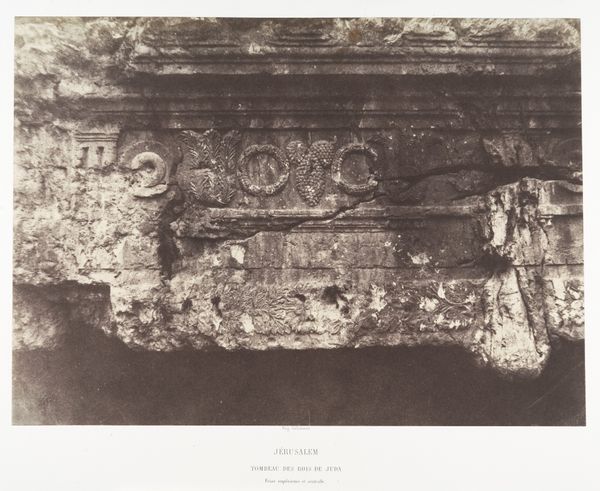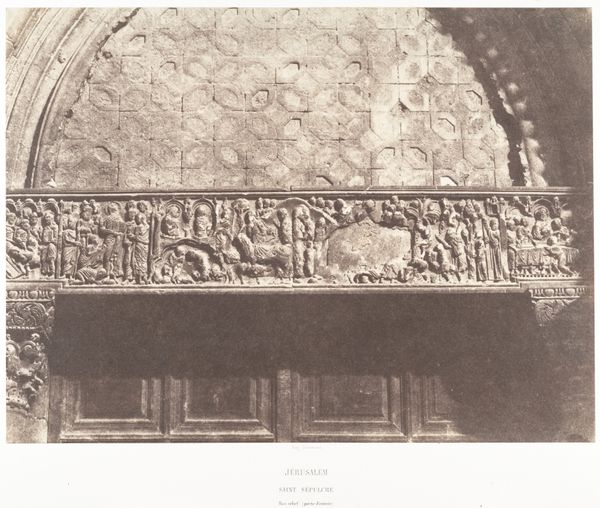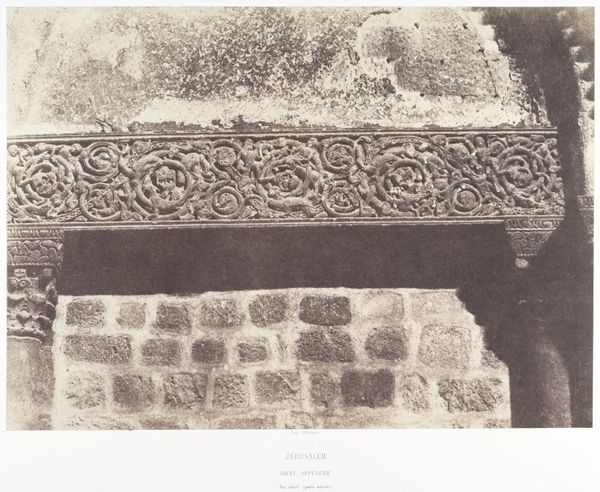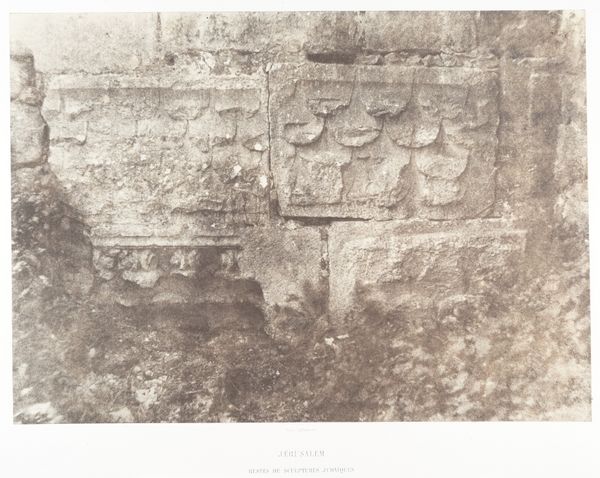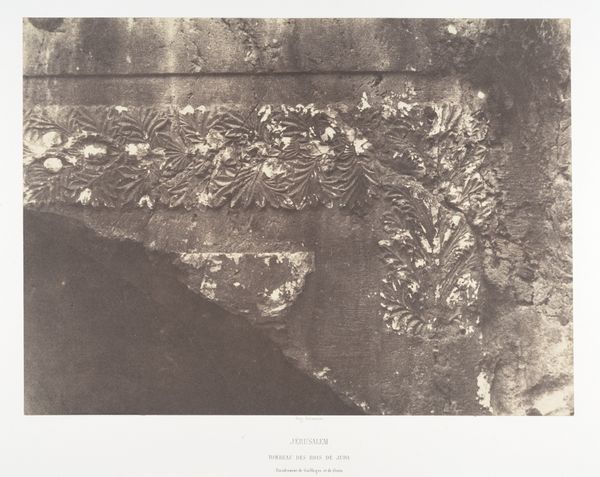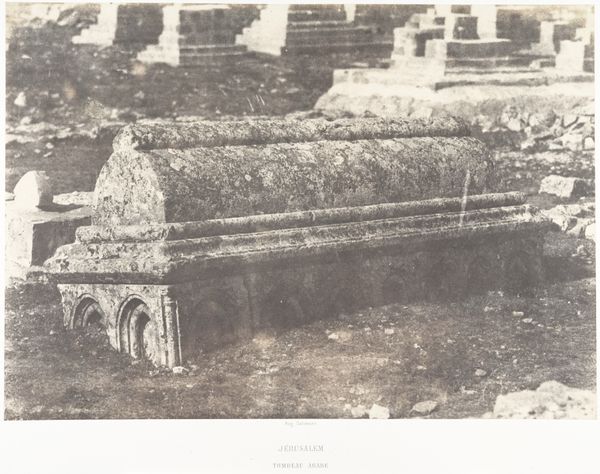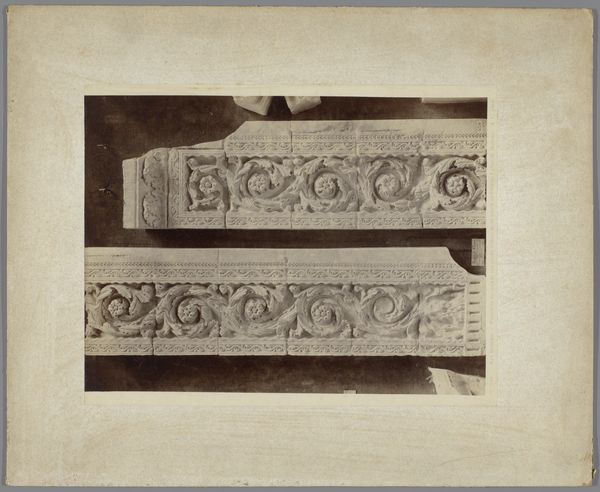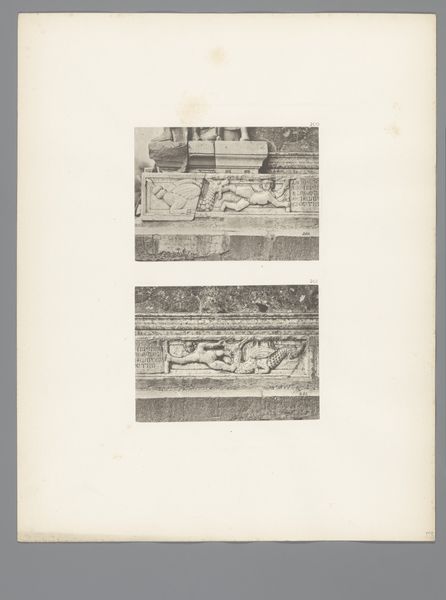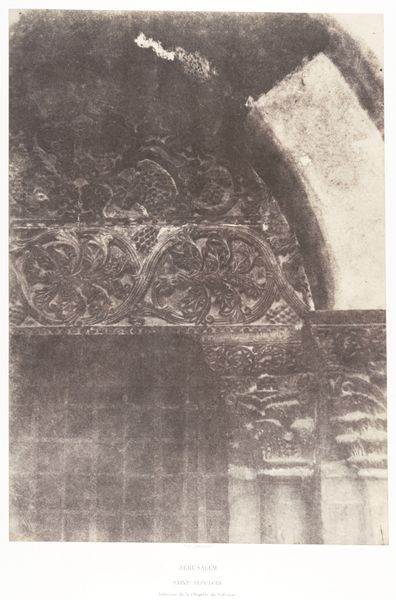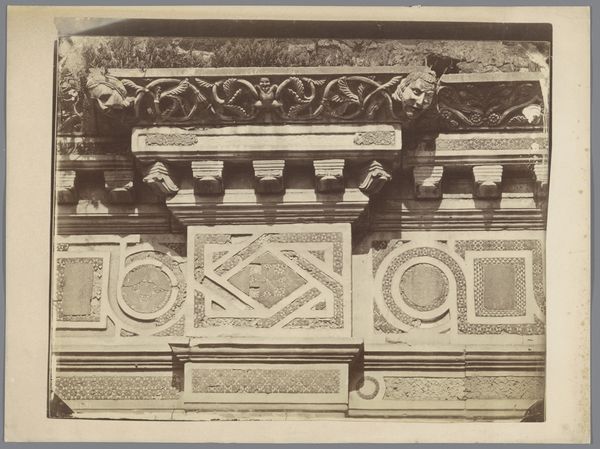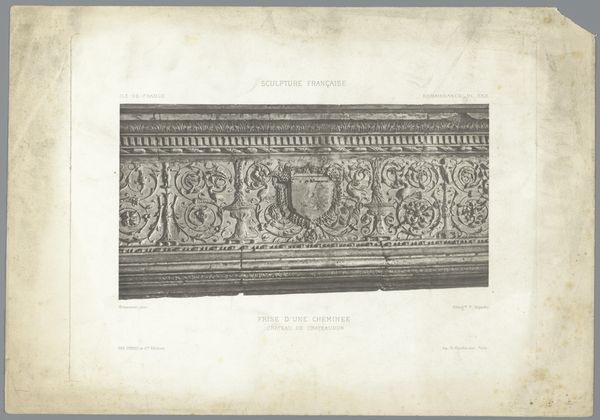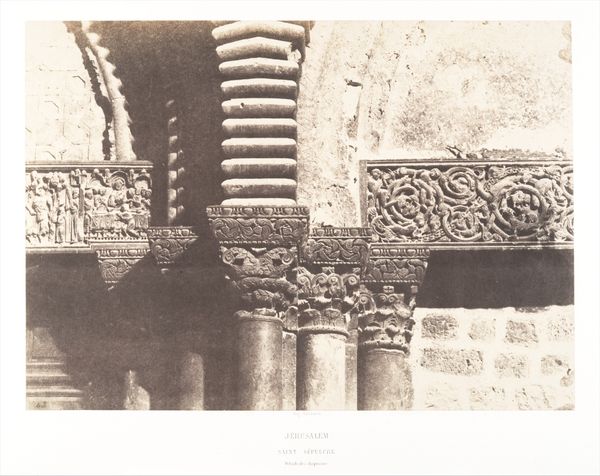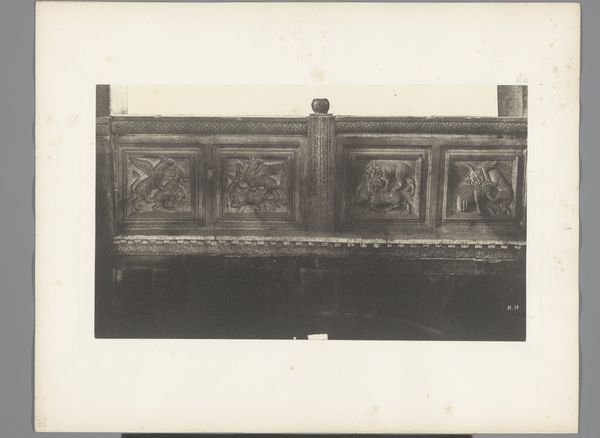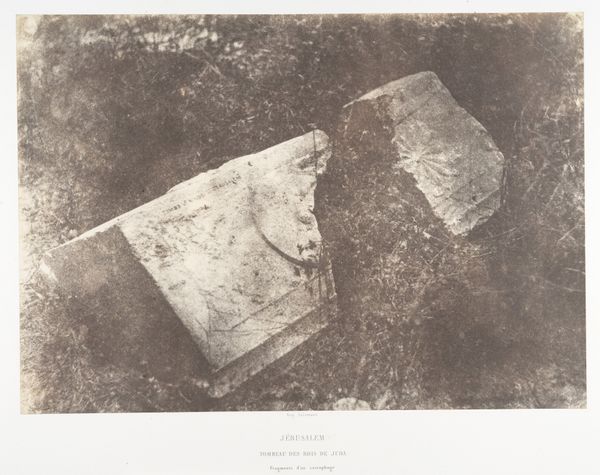
Jérusalem, Vallée de Hinnom, Détails de la frise de la retraite des Apôtres 1854 - 1859
0:00
0:00
photography, site-specific, albumen-print, architecture
#
landscape
#
photography
#
ancient-mediterranean
#
site-specific
#
albumen-print
#
architecture
Dimensions: Image: 21.9 x 32.4 cm (8 5/8 x 12 3/4 in.) Mount: 44.6 x 58.9 cm (17 9/16 x 23 3/16 in.)
Copyright: Public Domain
Editor: This is an albumen print by Auguste Salzmann, taken sometime between 1854 and 1859. It’s called *Jerusalem, Vallée de Hinnom, Details de la frise de la retraite des Apôtres*. Looking at this frieze, I am immediately struck by how meticulously it has been captured with the medium of photography. What details jump out at you? Curator: Observe the interplay between the rough, unprocessed rock above the frieze and the carved forms in the decorative register below. The contrast is visually very stimulating. Salzmann emphasizes these juxtapositions via the tonal range inherent to the printing process; notice, especially, how each module is slightly different in tonality. This tonal contrast guides the viewer’s eye rhythmically from left to right, as if performing a linguistic reading. Do you agree? Editor: That's fascinating! It seems that he wasn’t merely documenting; he was composing through contrast and tonal relationships, not unlike how a painter manipulates light and shadow. So, you see the materiality of the albumen print itself as an integral element of the work's meaning? Curator: Precisely. The very substance of the photographic print – its textures, its capacity for nuanced grayscale – dictates the visual experience and thus informs our understanding of the architectural elements it depicts. Further, by orienting our eyes laterally from form to form, he allows us to study its design elements up close. It would not read as coherently, I would argue, in person. Editor: I had never thought about how the photographic process itself adds so much to the understanding of architecture. Thanks! Curator: And thank you for your astute observations. Paying attention to such details, such as tonality, enables deeper engagement with artworks.
Comments
No comments
Be the first to comment and join the conversation on the ultimate creative platform.
